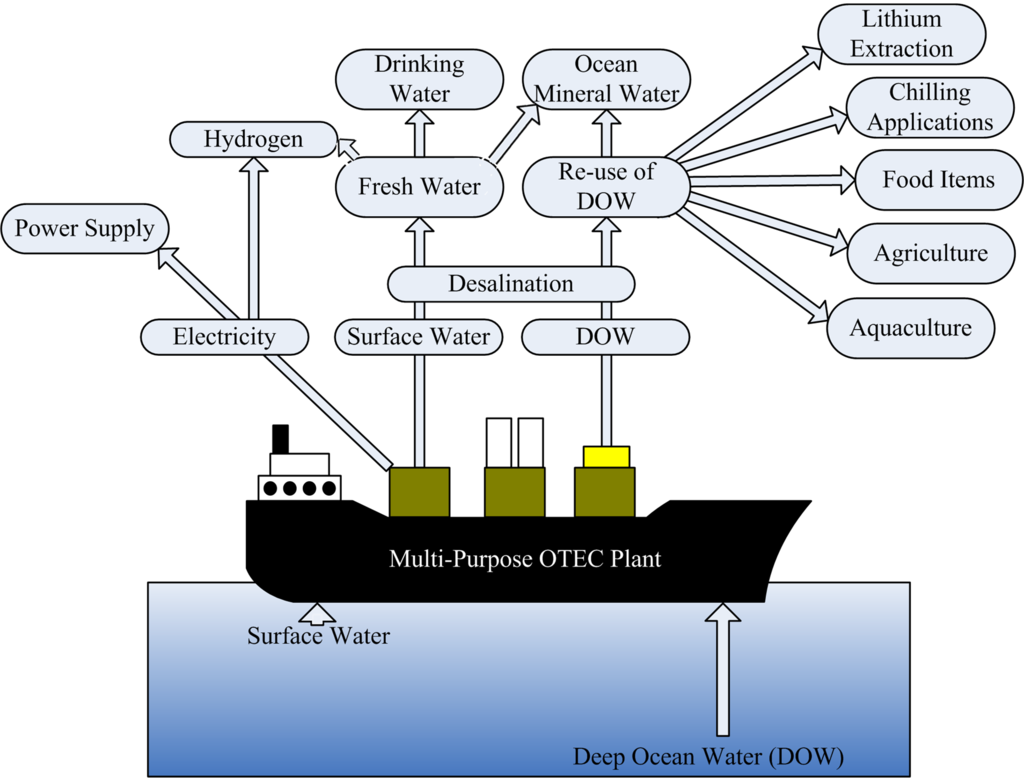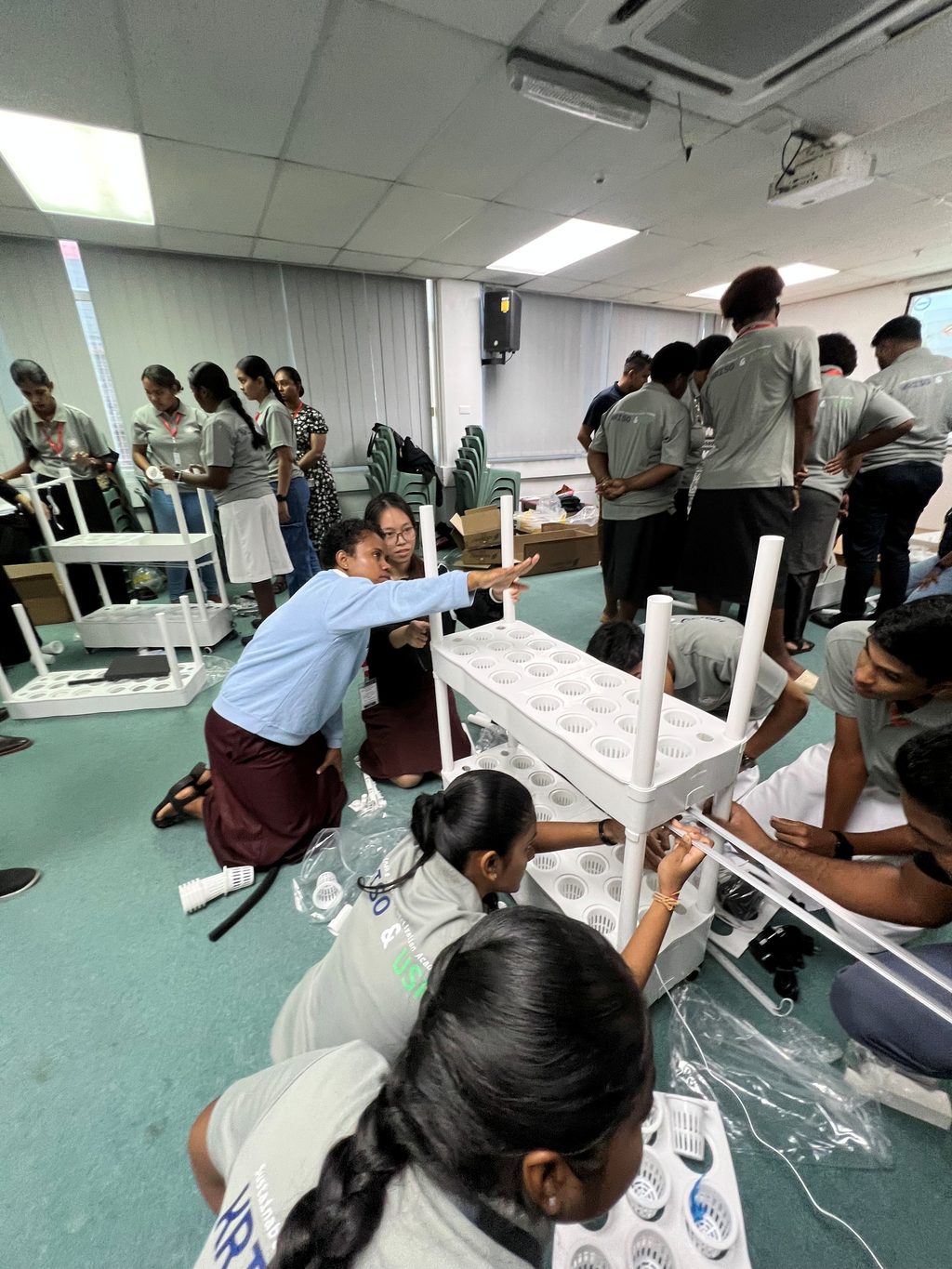THE University of the South Pacific( USP) has embarked on a pioneering project to integrate ocean-based renewable energy systems into its infrastructure.
It is specifically the Seawater Air Conditioning (SWAC) system combined with desalination, the process of removing salt from seawater and hydroponics. The project aims to implement the SWAC system at the university campus.
Funding and stakeholders behind project
The project, funded by the Korean government, aims to reduce USP’s reliance on fossil fuels and serve as a model for sustainable development in Fiji.
Professor Mohammed Rafiuddin Ahmed of USP’s School of Information Technology, Engineering, Mathematics and Physics, confirmed the $US3.8million ($F8.62m) project is funded by the Korean government.
Training students on OTEC and SWAC
A three-day workshop on sustainable seawater utilisation was conducted at USP’s Lautoka Campus to train youths on ocean thermal energy conversion (OTEC), SWAC and the byproducts.
Seawater utilisation, including introduction to OTEC and SWAC, seawater aquaculture, desalination technologies, cultivation of marine plants for bioenergy and biofertilisers, sustainable development goals were the topics covered in the workshop.
Explaining OTEC, Prof Ahmed said a heat engine works on a temperature difference with a heat source at a higher temperature and a heat sink at a lower temperature, operates in a cycle and produces power.
The fully renewable energy source has no harmful effects on the environment.
“Apart from power generation, which is the main output, a multipurpose OTEC plant can give hydrogen as a byproduct, supposed to be the fuel of the future.”
Benefits of hydroponic kits
Presentation on hydroponic growth of vegetables as well as the demonstration and participation in hydroponic kits assembling were also part of the workshop.
A hydroponic system is used for growing vegetables using nutrient rich water and not soil.
Hydroponic growth of vegetables is mainly for food security in the South Pacific especially considering climate change and coastal flooding.
Prof Ahmed said 50 kits would be distributed to schools and coastal communities affected by flooding and finding it difficult to grow vegetables due to freshwater mixing with sea water.
For many students, learning to assemble and planting seeds in the hydroponic kits was a memorable experience, considering they would be taking two of them to their schools to grow different vegetables hydroponically.
The fossil fuel issue
Professor Ahmed said a vast majority of Pacific Island countries still do this and it is harming the environment.
While larger countries have made progress with clean coal, Pacific Island countries are trying to produce their own biofuels, which are sourced from living matter such as animal waste, plants and algae.
Prof Ahmed said that solar PV (Photovoltaic) systems and wind turbines were not contributing much to meet energy demand.
The implementation of OTEC technology will, however, reduce the use of diesel generators in Fiji and regionally.
Prof Ahmed says the countries are located at the most suitable spot for OTEC power generation.
“An OTEC power plant can serve as the base plant which produces power round the clock and round the year and is not dependent on the flow of wind or sunny days to generate electricity,” he said.
Some countries have taken the initiative to install OTEC plants – Marshall Islands, Kiribati, Palau – with other countries like Solomon Islands, Tuvalu and Fiji working on implementing these, Prof Ahmed said.
He said the potential for extracting lithium from the deep sea would be another major benefit.
The project also envisions creating an artificial ecosystem using cold deep-sea water, enabling the cultivation of seafood typically found in colder climates, such as pink salmon.
This could also be used to cool farming areas for growing cold-climate vegetables.
For USP, the project will implement SWAC in a large USP building.
“We did the initial work, estimated the cooling load and how much would be the power saving when we replace the traditional air-conditioners with seawater air-conditioners.”
The implementation may take more than a year, but Prof Ahmed confirmed all existing air-conditioners from the offices and labs can be removed once SWAC is operational.
He said a full building, cooled using SWAC had not been implemented in the country until now.
“The main requirement is that the location should be close to the sea.
“If you are 10 kilometres, 20km away from the shoreline, then it’s not feasible.”
Prof Ahmed believes it can be implemented in a variety of large buildings, whether they’re government buildings or in rural areas, universities or schools as long as they are close to the sea.
“Globally all universities are trying to be energy independent, generate their own power using renewable sources.”
Schematic diagram of a multi-purpose OTEC plant. Picture: SUPPLIED



